A Private Tour today. It was a nice bright day, not as hot as it has been in previous days and with a stronger W/WNW wind – comfortable conditions for birding. We had some specific targets to find, so we started in the north Brecks, headed up to the North Norfolk coast, and then went out again in the evening for Nightjars.
We met in Swaffham as the rest of the group were on their way up from the south this morning. We had a particular target to find a Tree Pipit, so we headed out into the Forest and parked by a convenient clearing. It was quiet when we got out of the minibus, apart from a Yellowhammer singing in the distance. We set off down the path through the middle of the clearing, and had gone no distance when a Tree Pipit started singing behind us. We turned to see it flutter up and fly over our heads, before landing in the top of a tree next to us, where we got it in the scopes. A good start!
A Yellowhammer flew in and swooped at the Tree Pipit, landing on a nearby branch. The Tree Pipit continued singing unperturbed but after a while, launched into another song flight, fluttering up and parachuting down into the next tree down. We had an even better view of it now, side on.
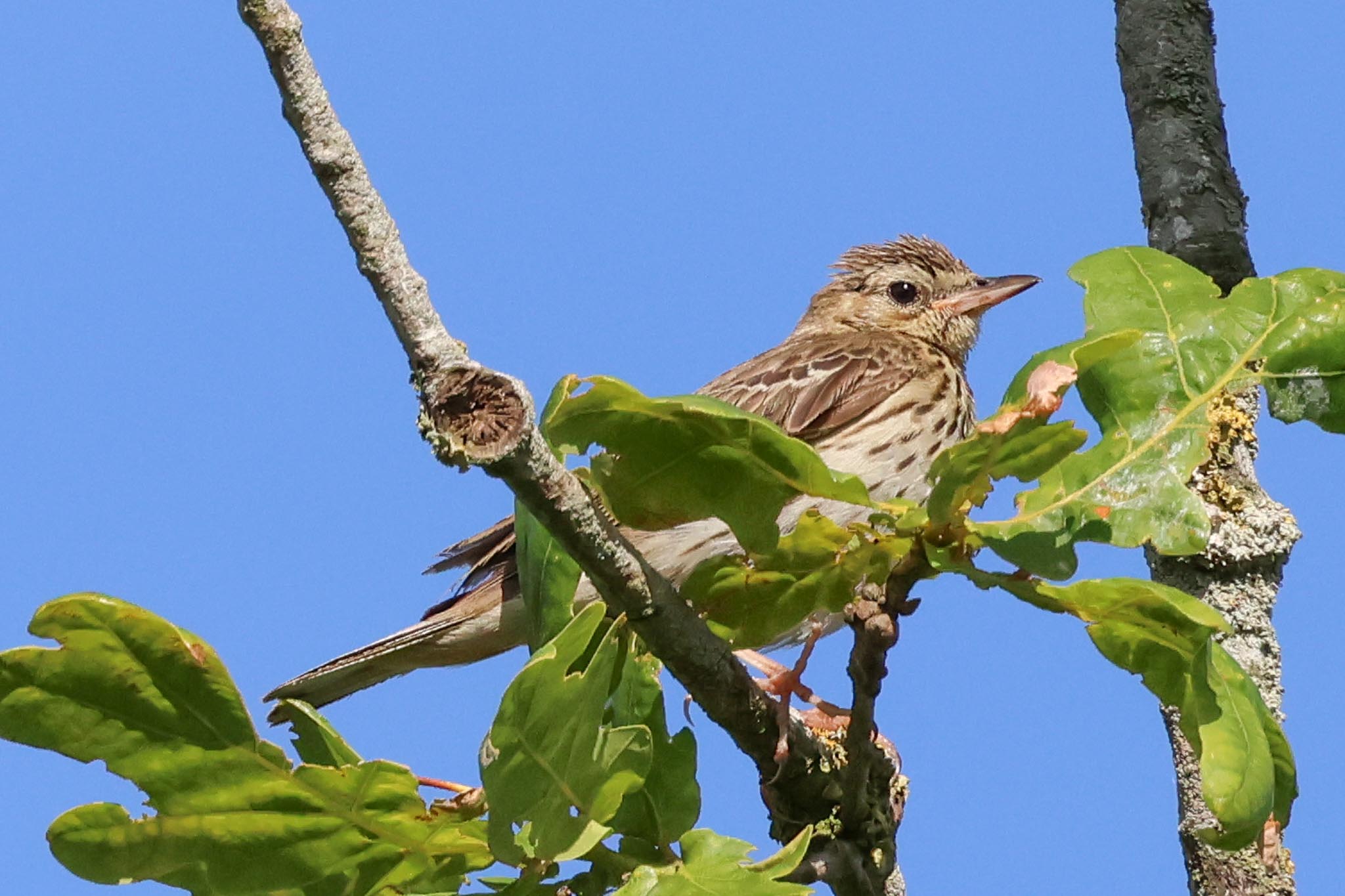
The first of our targets acquired in no time, we decided to move on. Back to Swaffham, we picked up the car we had left there and drove north up to the coast at Cley. There had been an American Golden Plover here for over a week, but it had disappeared from its favoured North Scrape for most of yesterday before reappearing on Simmond’s Scrape in the evening. It was apparently back on North Scrape this morning, and would be a new bird for the group, so after a quick check in at the Visitor Centre, we headed straight round to the beach car park.
As we walked along the shingle, there were lots of gulls offshore in a feeding frenzy, we could see the fish splashing on the surface. Looking through, we picked out several Mediterranean Gulls and a couple of Sandwich Terns in the throng. There were a few Curlews moving offshore too – strange to think they are coming back already, their breeding season over.
When we got to the screen overlooking North Scrape, we could see the American Golden Plover on the mud close to the front. We found somewhere we could see over the reeds with the scope and had a good look at it, noting the long primary projection and bulging white on the sides of the breast.
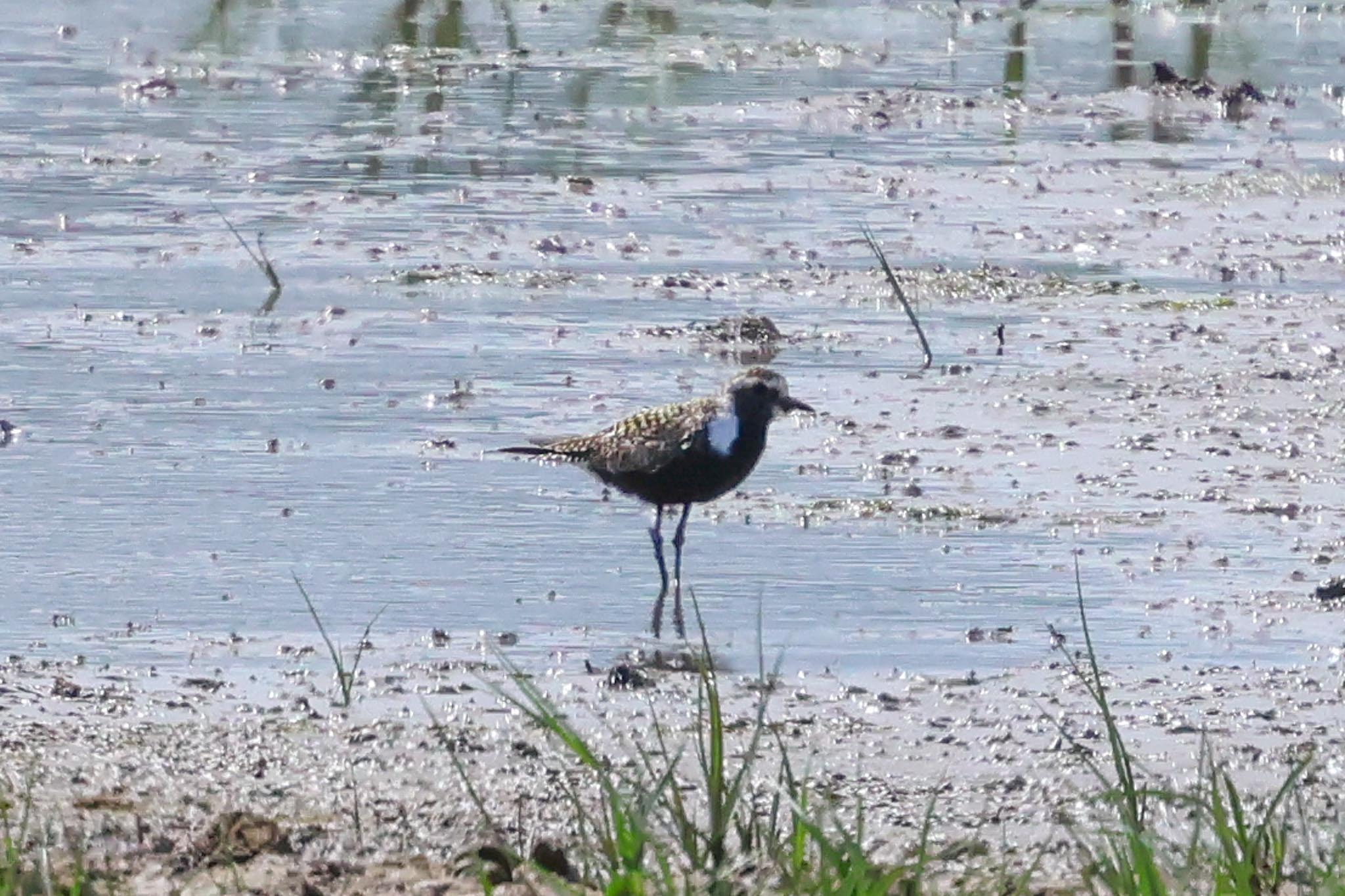
The second of our targets in the bag, we had a scan round the rest of the scrape. A single 1st summer Little Gull was wading around in a small pool, looking particularly small between a couple of Black-headed Gulls, and there were more Mediterranean Gulls roosting with a small group of gulls on the dry mud. As well as Lapwings and Oystercatchers, we found a single Little Ringed Plover too. A pair of Linnets landed in the gorse right next to us.

As we walked back to the car park, there were several Meadow Pipits song-flighting, fluttering up and parachuting down, so we stopped to listen and contrast their much simpler song to the Tree Pipit we had heard earlier. There were Skylarks singing too, and one perched obligingly on a fence post close to the path for us to admire.
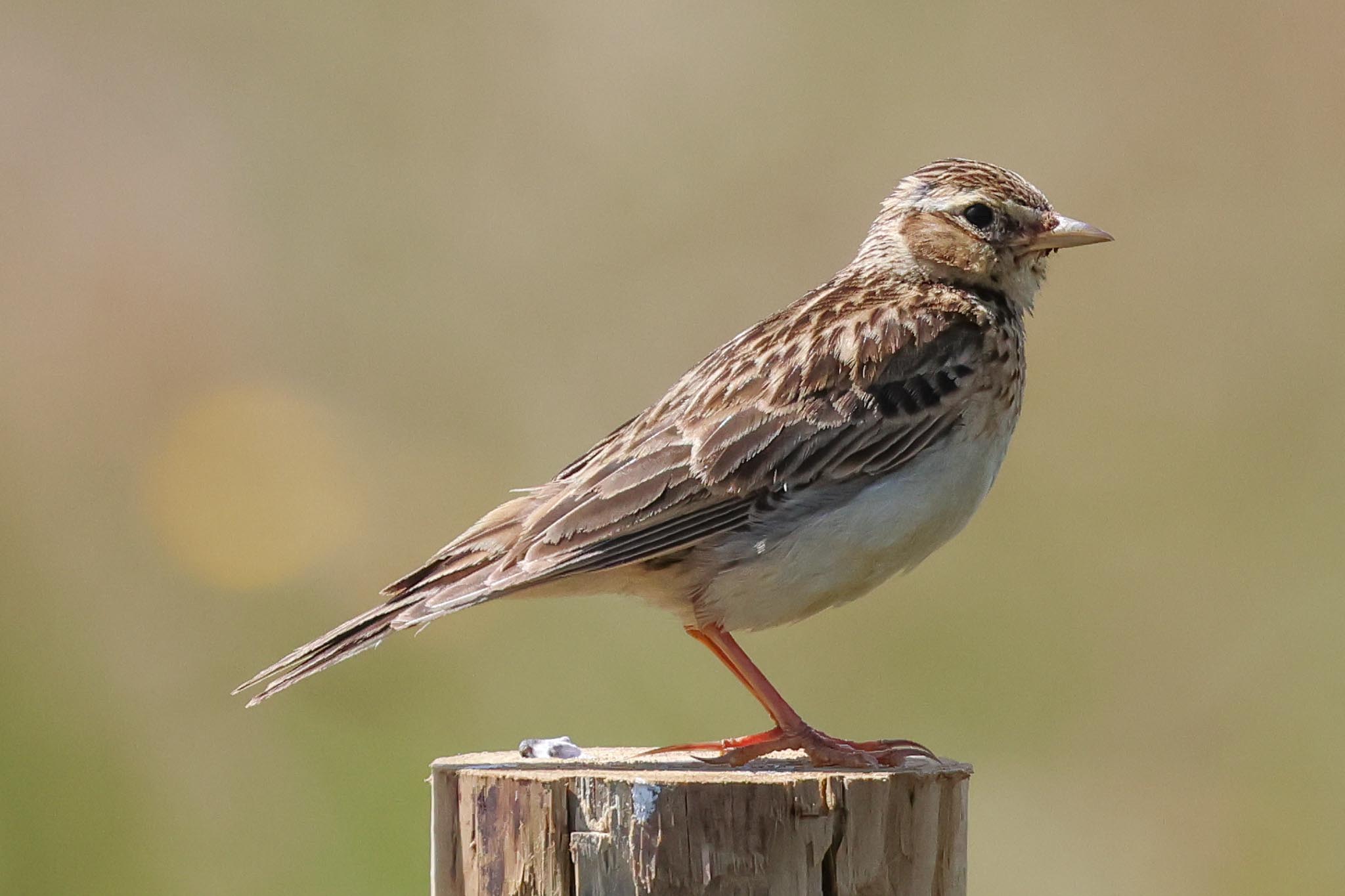
We drove back round to the Visitor Centre and with a bit of time before lunch we walked across the road and out to Bishop Hide. Along the path through the reeds, we could hear Bearded Tits calling and saw a couple fly back and forth across the path, though it was a bit too windy for them to perch up today. From the hide, we could see lots of Spoonbills and Little Egrets on the nearest island in front of the hide. There were several juveniles off both, the young Spoonbills sporting short teaspoon-bills.
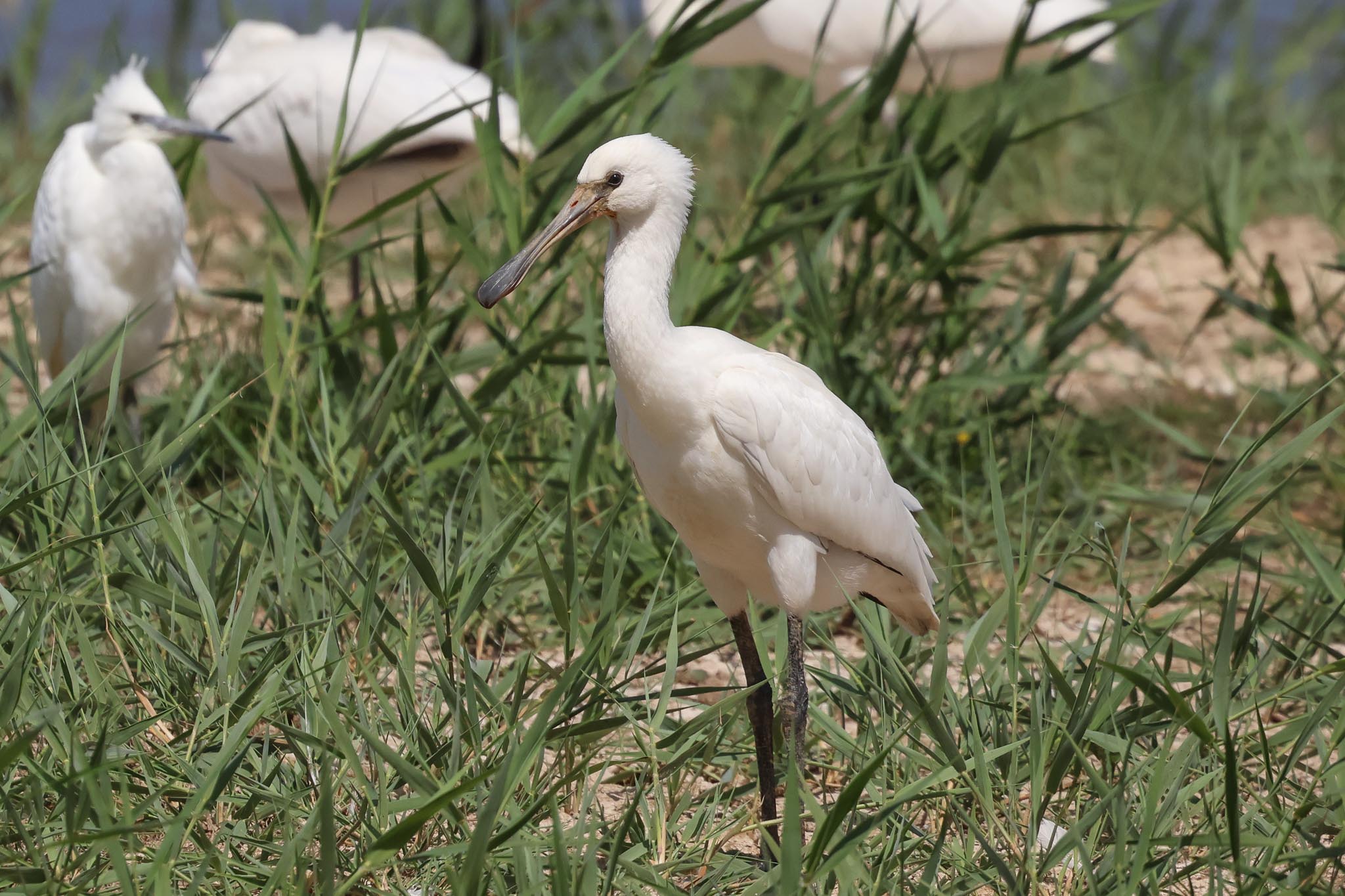
There were several Ruff feeding on the mud. The males take no part in raising the young and once the lekking season is over, they leave the breeding grounds. As soon as they get here, they start to moult, rapidly losing their ornate ruffs. They look very scruffy at this time of year, and the variation is bewildering – no two are alike! There were lots of Avocets and Black-tailed Godwits and several Little Ringed Plovers on here too, and we could hear a Greenshank calling from further over. A few Teal have already returned too and a female Shoveler swam past in front of the hide.

It was a good time to break now for an early lunch. Scanning from the balcony at the visitor centre afterwards, we could see a Marsh Harrier out over the reedbed and some Sand Martins distantly out towards Arnold’s Marsh. A Ringed Plover flew in and landed briefly on Pat’s Pool.
We walked out to the central hides for a quick look at the other scrapes next. The Greenshank we had heard earlier was still on Simmond’s Scrape, along with a single Dunlin. Two more Little Gulls, a Mediterranean Gull and a Common Gull were dozing on the mud. The water level here has dropped very rapidly in the recent warm weather, and the warden appeared in the hide, as he wanted to go out to open the pipes and let some more water on. He waited while we finished scanning, then we decided to walk back and let him get on with it.
Our final destination for the afternoon was up on the Heath. A pair of Bullfinches landed briefly in a bush in the car park, before flying off calling. A male Stonechat perched on the top of the gorse and several Linnets flew in and out calling. There was some high cloud this afternoon, and it was still breezy, but when the sun came out we found several Silver-studded Blue butterflies.
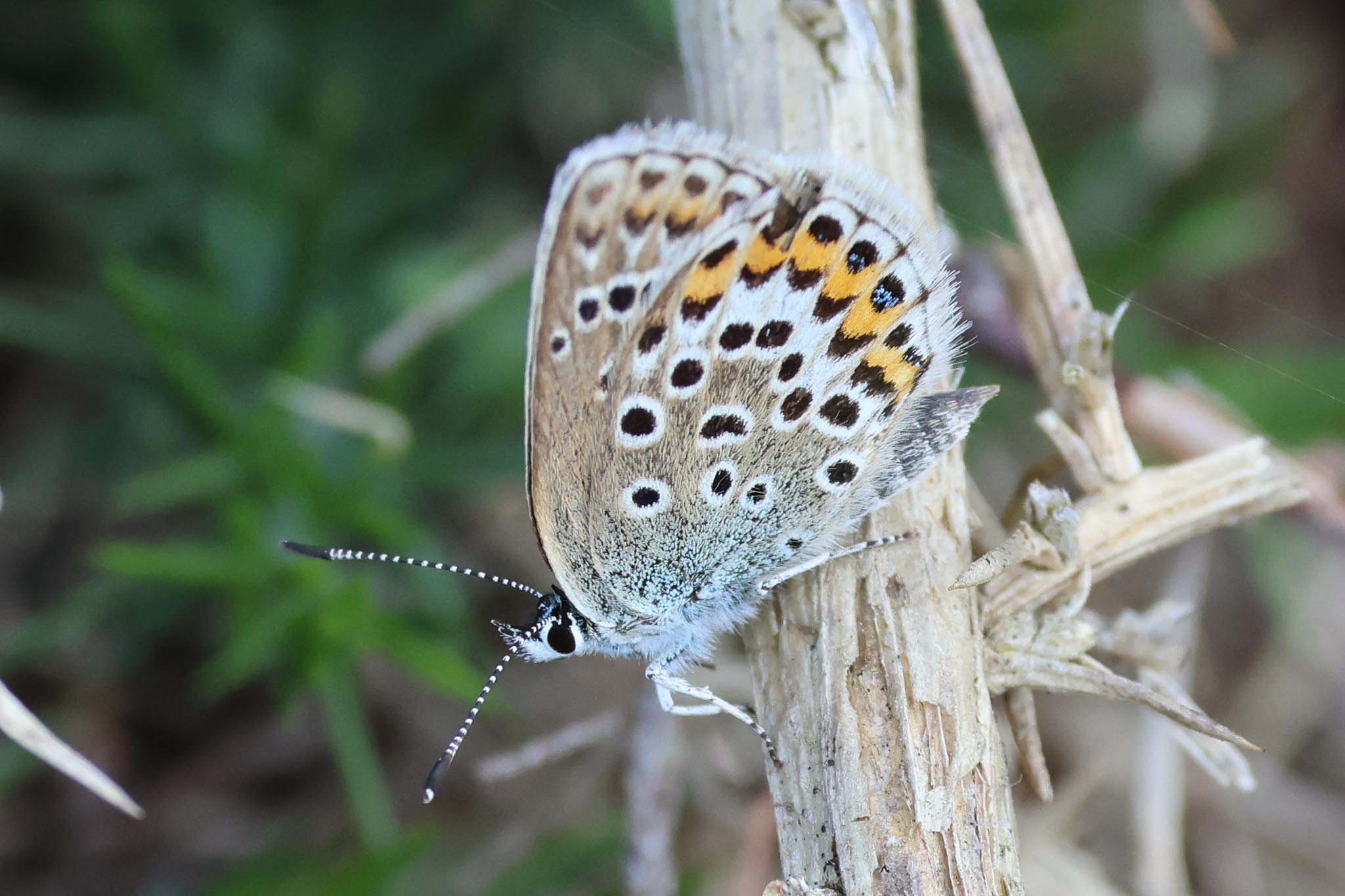
We were hoping to find a Dartford Warbler, but we drew a blank in the first two territories we walked through. They can always be tricky in the afternoons and are often easier to find in the mornings, but we had other priorities this morning. Then just as we were walking up to the next territory, we heard a male Dartford Warbler singing, and turned to see it in song flight. It then flew in and landed right in front of us and we realised there was a female here too, collecting food. We stood quietly where we were and watched the two of them, completely unconcerned at our presence – great views.
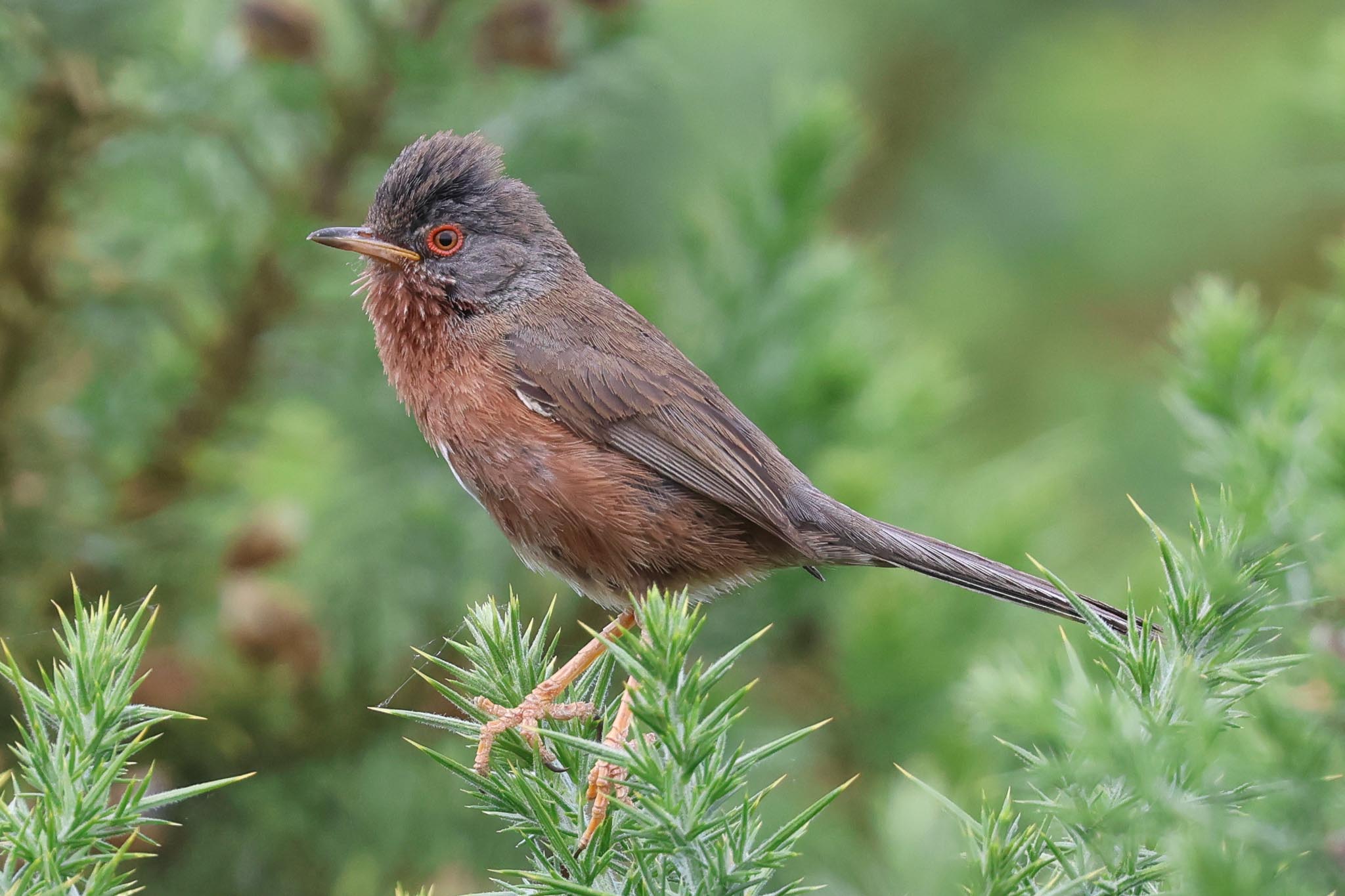
We were just walking back when a Woodlark flew over our heads singing. It seemed to be dropping towards a favoured feeding area which we had just come past, so we walked back to see if we could find it. We stood and listened, but there was no sign at first, so we thought we would try the other path back. We had only gone a short distance when we heard a Woodlark calling from the long grass and as we stopped to look we noticed another on the track right in front of us. More great views. Eventually one flew up out of the long grass, and was followed by four more, including the one from the path, a family group.
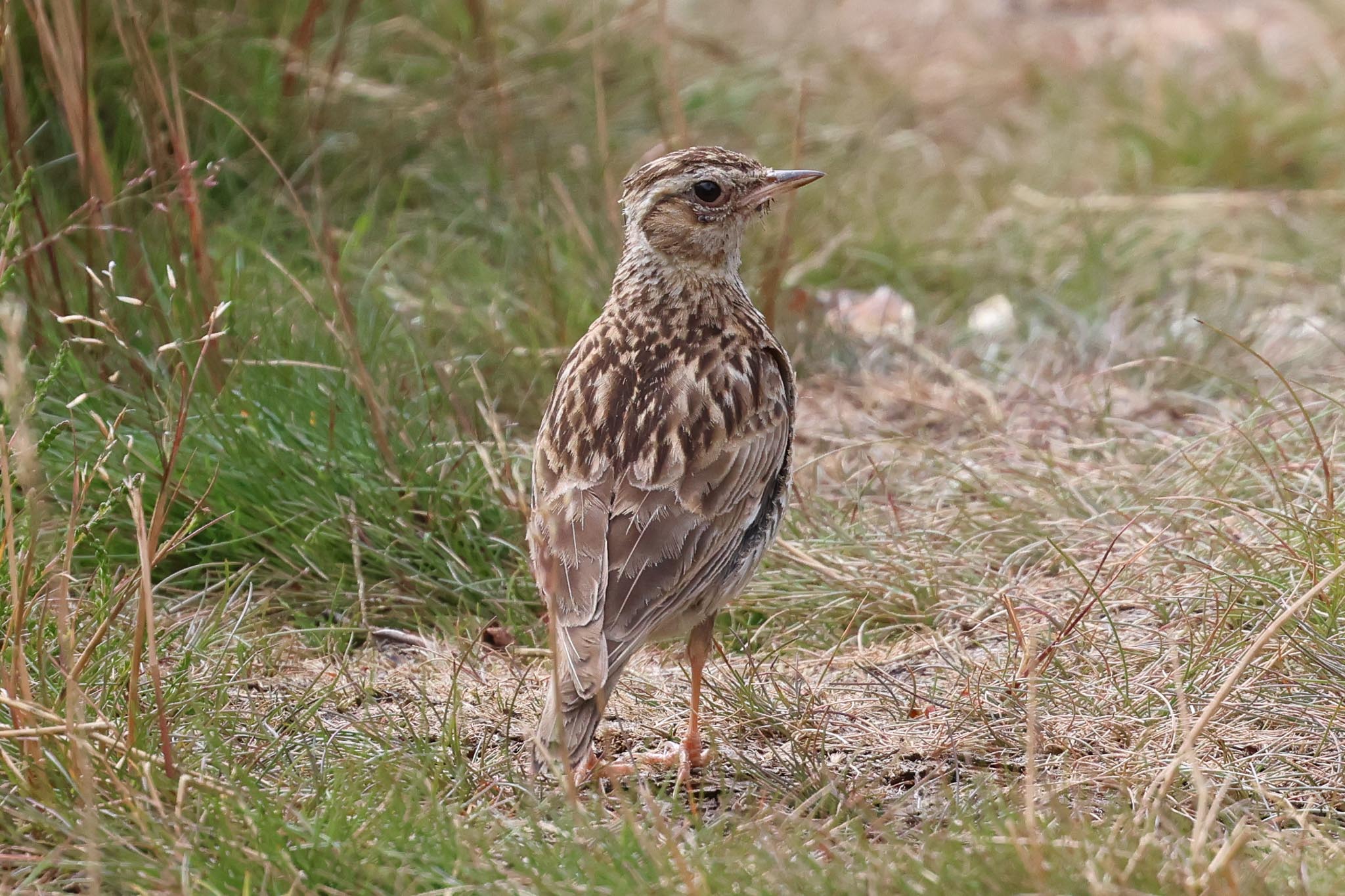
As we resumed the walk back, we stopped to watch lots of tits in the trees by the road, along with several Chiffchaffs. Then it was time to call it a day and give everyone a chance to get something to eat.
We met again later, and headed out first to look for Barn Owls. We had a quick drive round the marshes where they like to hunt, but there was no sign of any owls out yet, so we stopped to scan. A Grasshopper Warbler started reeling across the road, so we walked over to see if we could find it but it must have been tucked down out of view. A couple of Sedge Warblers flew back and forth. Then we turned to see a Barn Owl flying across the road behind us. We thought it would hunt a nearby fields but it flew straight over, over the reeds and disappeared straight into a bush, back in to roost. It was obviously not having to feed hungry youngsters!
Back up onto the bank, we watched a distant Marsh Harrier over the marshes and an even more distant Barn Owl. It appeared to drop down, so we drove round to have a look and see if we could find it, but there was no sign. A good start, with two owls briefly, but we still had a little time to see if we could find more. We set off to drive back round to where we saw one the other night, and hadn’t got that far, when we noticed a Barn Owl hunting the field by the road. We stopped to watch as it quartered over the field, a coming right round in front of us. It dropped into the grass a couple of times, but didn’t come up with anything – it stayed down for a while, so may have eaten something itself. Then it landed on the roof of a nearby barn, where we got it in the scopes.

We had another appointment to fulfil still tonight, so we had to tear ourselves away from the Barn Owls. We drove up to the heath and walked out, positioning ourselves in the middle of one territory. We didn’t have to wait too long before the first Nightjar started churring. It was distant, but then another started up much closer to us, from somewhere down on the ground. As the light faded, they started to fly round – a couple of times, the resident male came in to check us out, flying over our heads, flashing the white in its wings and tail. We had the scope set up on its favourite perch, but when it flew in it changed its mind at the last minute and didn’t land on it tonight. A female flew past too. We stood and listened for a while, a wonderful sound on a summer’s evening. Then we decided to head for home.
As we walked back, a Nightjar flew round and landed on the path a short distance ahead of us. It appeared as it it may be dust bathing, so we got it in the scope and had a good look in the last of the light. We couldn’t get round it, so in the end we had to walk on – the Nightjar kept flying up and landing again further along the path ahead of us, until we were almost at the edge of the heath! A great way to end a very successful day’s birding.
















